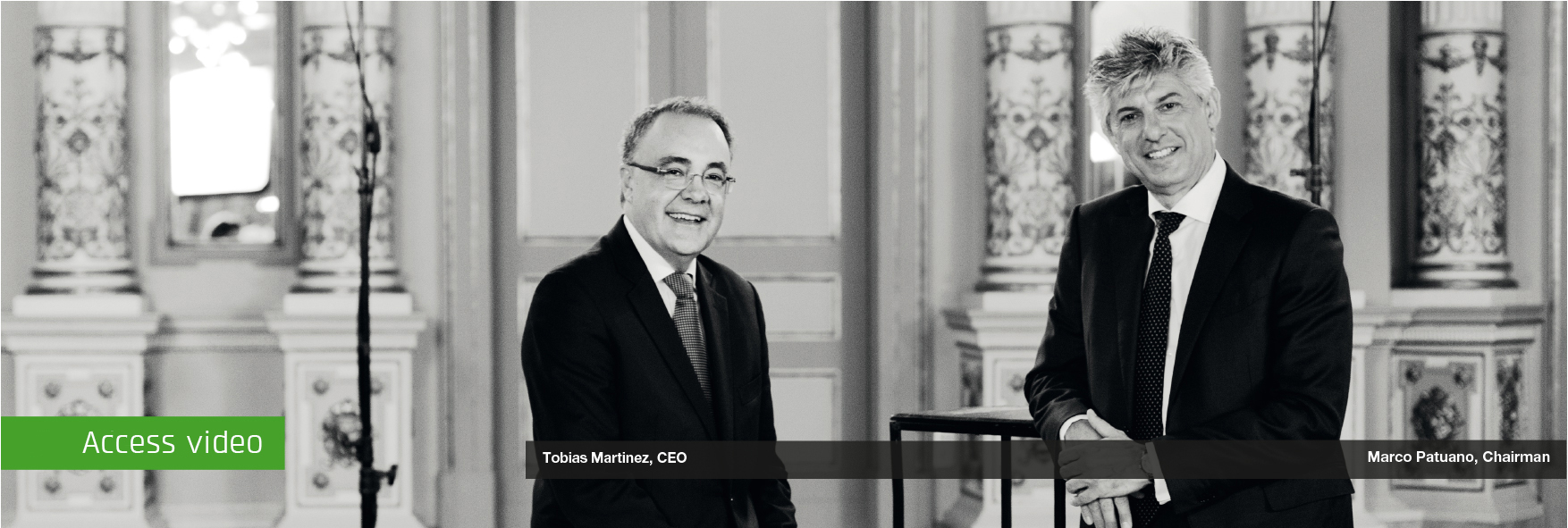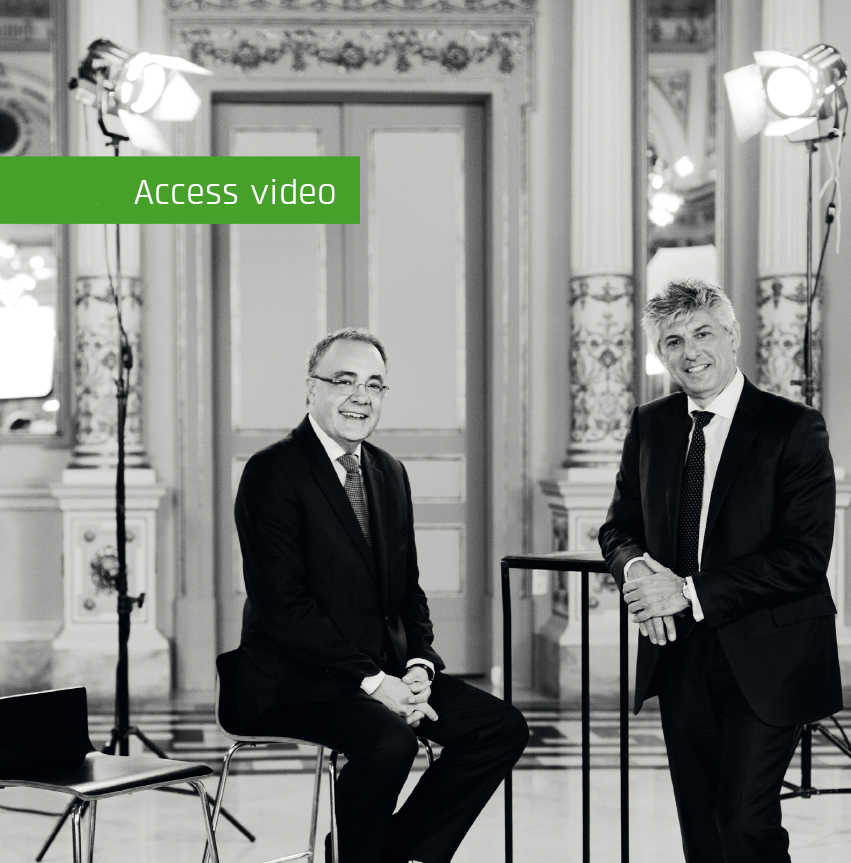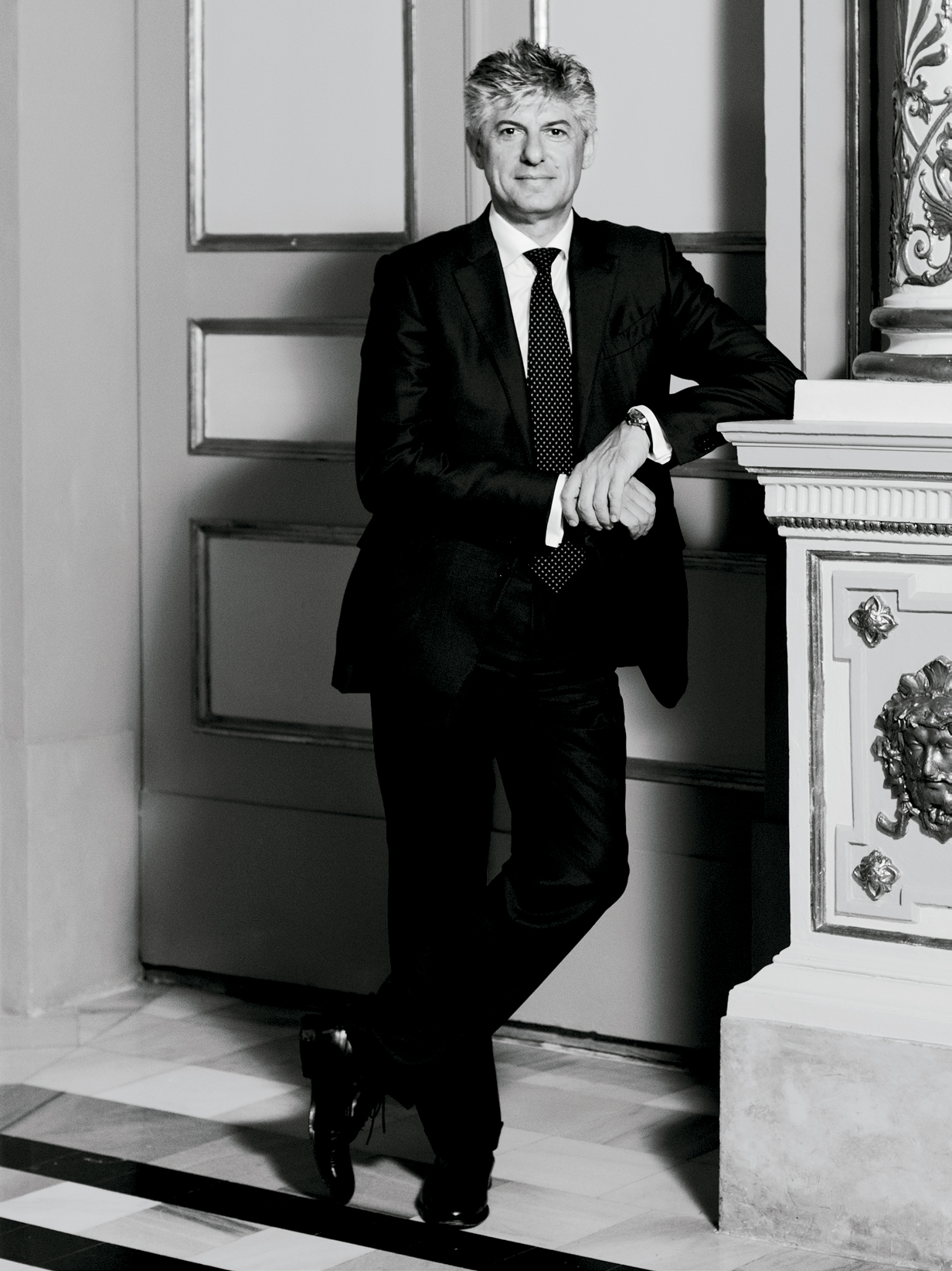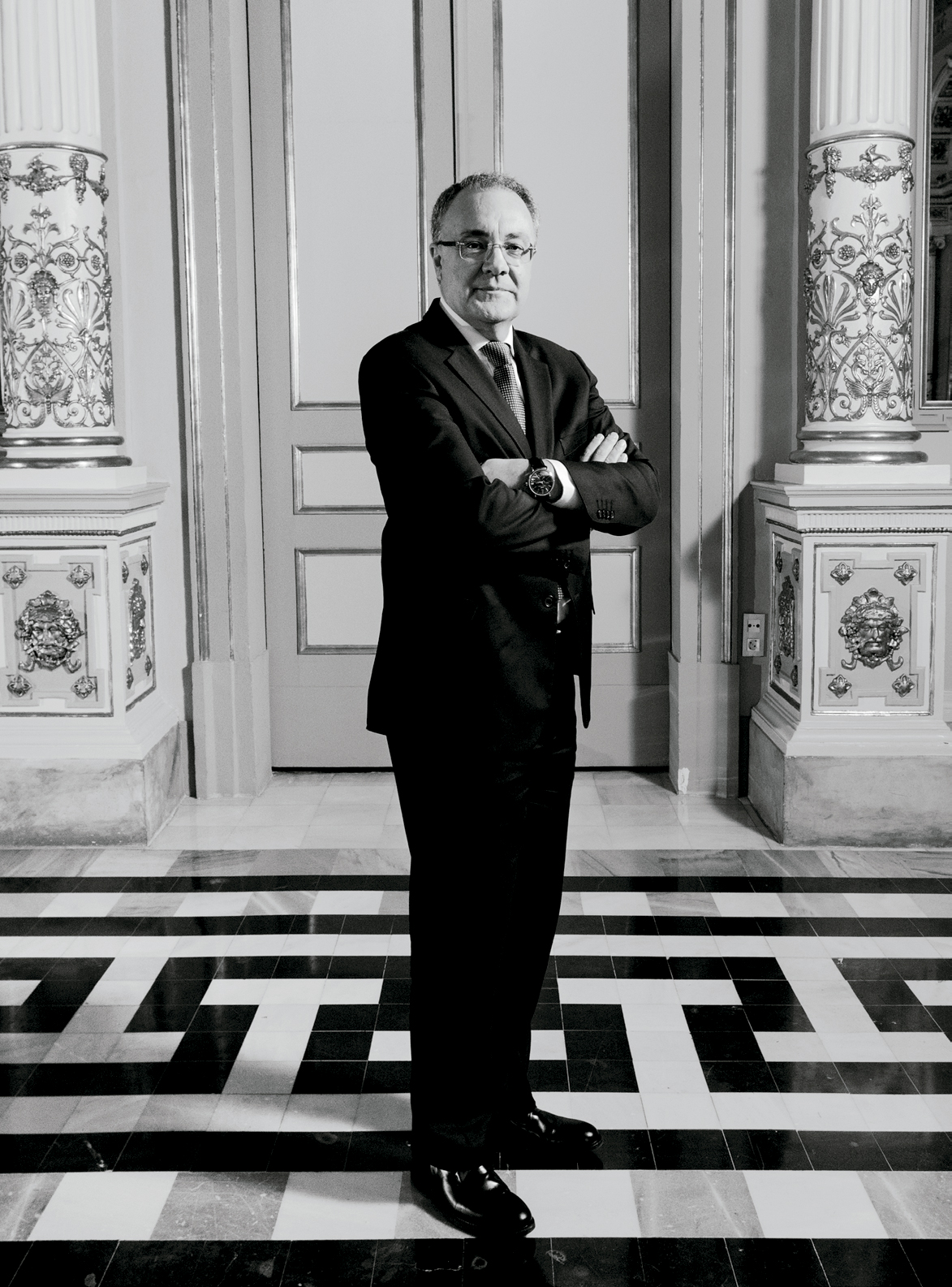Growing in Europe and deploying the 5G ecosystem


What were the key elements that marked financial year 2018 for the Group?
Marco Patuano (MP): A key aspect in this financial year that we are closing was the reconfiguration of the Group’s shareholder structure following the divestment of Abertis and the entry of ConnecT, with a 29.9% stake, as the company’s main shareholder. This also had implications for corporate governance. I will come back to this later.
 As far as the day-to-day running of the company is concerned, I would underline the solidity of Cellnex and that of the management team which is able to align objectives with results. We have closed a year during which we fulfilled the forecasts we shared with the market at the beginning of the year in terms of revenues, EBITDA and recurrent cash flow, placing us in the upper tier of these forecasts. I also believe that we must again continue to highlight this year the team’s ability to strike a balance between managing growth, which continues to be intense in terms of expanding the perimeter - in 2018 we incorporated c.2,500 new sites - while maintaining the focus on like-for-like business management.
As far as the day-to-day running of the company is concerned, I would underline the solidity of Cellnex and that of the management team which is able to align objectives with results. We have closed a year during which we fulfilled the forecasts we shared with the market at the beginning of the year in terms of revenues, EBITDA and recurrent cash flow, placing us in the upper tier of these forecasts. I also believe that we must again continue to highlight this year the team’s ability to strike a balance between managing growth, which continues to be intense in terms of expanding the perimeter - in 2018 we incorporated c.2,500 new sites - while maintaining the focus on like-for-like business management.
Tobias Martinez (TM): Indeed, as the Chairman has pointed out, the dynamics of Cellnex remain marked by both the expanding perimeter and the organic growth components. In terms of organic growth, we continue to display very solid indicators in the region of a 5% increase in the amount of equipment deployed at our sites, and an increase of 3% in customers per site. Furthermore, consolidated data continues to reflect double-digit growth in revenues with c.15% and in EBITDA with c.20%, which indicate how the company’s portfolio continues to grow, driven, by the incorporation of new assets in France within the framework of our agreements with Bouygues Telecom or in Spain with the integration of Xarxa Oberta de Catalunya (XOC), for example.
In relation to inorganic growth we might think that 2018 marked a pause in Cellnex’s growth operations. Is this correct?
 TM: First of all, I would highlight that in 2018, as I said before, the company continued to develop the agreements reached with our customers in terms of integrating sites and new roll-outs; in France, for example, we have commitments to roll out new infrastructures in the next years, in the wake of the agreement with Bouygues Telecom that we announced last December. Also in this regard it is worth pointing out that cumulative investments this past year reached c.600 million; so the company is still expanding its asset base.
TM: First of all, I would highlight that in 2018, as I said before, the company continued to develop the agreements reached with our customers in terms of integrating sites and new roll-outs; in France, for example, we have commitments to roll out new infrastructures in the next years, in the wake of the agreement with Bouygues Telecom that we announced last December. Also in this regard it is worth pointing out that cumulative investments this past year reached c.600 million; so the company is still expanding its asset base.
Therefore I would not talk about a pause so much as a consolidation of our growth. It is worth remembering that from 2015 until the close of 2018 we have announced or undertaken growth investments to the tune of more than € 3.5 billion.
In relative terms, if we compare 2018 with 2017, it is true that we have announced fewer growth projects, although these are very significant from a strategic point of view, such as the incorporation of the XOC fibre optic network or the new agreement with Bouygues Telecom. This agreement reinforces our strategic relationship with the French operator while it also positions us in a key segment for the future roll-out of 5G, providing the possibility to host data processing capacity in new strategic communications centres that we will deploy in France.
MP: I would add to what the CEO has said that there is an undercurrent in the telecommunications infrastructures sector in Europe which we understand will see continued outsourcing of assets by operators while we will also progressively see greater sharing of certain elements of the communications networks associated with the roll-out of 5G. In this regard, Europe is clearly a market rich with opportunities for operators like Cellnex and we remain attentive to the opportunities that this market can offer us. In fact, one could say that we know how to wait patiently for opportunities to come along.
You have repeatedly mentioned the company’s growth strategy. In terms of financing, there is a limit to growth with recourse to debt. What kind of instruments are available to the company to accompany this growth?
TM: First of all, we must underline the liquidity which the company continues to have by combining the undrawn debt with cash and bank funds, which provides us with € 1.5 billion in available liquidity. This clearly provides us some leeway to react quickly to any opportunities that the market can offer.
That said, it is no less true that Cellnex has to keep its accounts well balanced by also taking into consideration certain key aspects such as maintaining its “cross over” rating and foreseeable developments in the interest rate curve. The company uses this set of parameters, available liquidity, maintaining its rating and progression of financial costs to define the most suitable financing strategy at any given time for growth.
MP: Cellnex has taken full advantage of the favourable conditions on the debt markets during the last few years to invest more than €3.5 billion from its own balance sheet without needing to resort to shareholders. We have mentioned on other occasions how this reflects the company’s capacity to generate cash flow, which makes it possible to incorporate these new flows resulting from growth to contribute to reducing the ratio of net debt to EBITDA. In any case, and beyond our capacity to draw on debt, as the CEO has said, it is important for us to maintain our cross over from the rating agencies, meaning that we would not rule out certain alternatives that the market offers and that could be considered depending on any growth opportunities that may arise. Cellnex has already resorted to scenarios such as working together with other financial partners to undertake certain projects or issuing convertible bonds, and we cannot rule out the possibility that the transformational profile of one or more operations could lead at some stage to a capital increase.
Chairman, you foresaw that one key element in the financial year would be the change in the shareholding structure and consequently in the corporate governance of Cellnex. What would you underline within this process?
MP: Indeed, Cellnex’s new shareholder structure is one of the factors that marked financial year 2018. I think we can define the new situation as one of consolidation and stability, following the divestment of Abertis and the entry of ConnecT - with Edizione, Adia and GiC as shareholders.
Here I would like to underscore two messages that are consistent both with the strategy that Cellnex has been following since its flotation in 2015 and with the wishes expressed by the new shareholders. Firstly, Cellnex is an industrial project that has led to the creation of a European telecommunications infrastructure operator with the capacity and the will to build long-term partnerships with its customers in the various markets in which it operates. Secondly, Cellnex is a growth project whose medium and long-term perspectives, and the criteria by which they must be governed, are shared by the Board of Directors and by the company’s management team. In this connection I think it is worth pointing out that, as a reference shareholder, ConnecT has explicitly stated its commitment to the company’s industrial and growth strategy as well as committing the resources that may be necessary to accompany that strategy.
As regards Corporate Governance, the incorporation of ConnecT has led to a reshuffle in the Board of Directors that has also allowed us to align Cellnex with best practices in good governance.
On the one hand, I would highlight the increase in board members from 10 to 12, which made it possible to adjust the representation of ConnecT in the Board in terms of proportionality, with 4 directors out of 12. Likewise, we have reinforced the independence of the Board itself by incorporating 2 new independent directors, specifically Marisa Guijarro and Anne Bouverot, boosting diversity by reaching a female representation of 33%, thereby anticipating the CNMV’s recommendation of 30% by 2020. Finally, another key aspect from the point of view of good governance is the separation of roles between a non-executive chairman and a CEO as the company’s top executive.
I should add that the company has a Vice-President elected from among the independent directors and a Coordinating Director who is also independent.
In 2017, Cellnex shares had the highest revaluation on the Ibex35, at 56%. In 2018 the company’s shares continued to be among the top-performing stock on the selective index. How do you value this?
TM: It is clear that the valuation is necessarily positive when we are talking about a revaluation of +5% in the financial year with a differential of +20% in relation to the IBEX35. And if we compare the situation to May 2015, when the company went public, the revaluation now exceeds the 75%. We understand that the market continues to factor in both the increase in the company perimeter and the stability, recurrence and visibility of the flows it generated. Once again, I want to remind you that the sales backlog is now over € 18 billion, equivalent to 20 years’ turnover, taking the € 900 million income for financial year 2018 as the benchmark.
I also believe that the perception of consolidation and stability of the shareholding structure of the company and of the commitment of the new shareholders to Cellnex’s industrial project, to which the president also referred, is quite remarkable.
Investors, analysts and stakeholders in general are paying increasing attention to compliance with ESG (environment, social responsibility, governance) criteria by companies. What is Cellnex’s approach to these criteria and how important are they for the company?
MP: Indeed, we can see that the elements comprising the company’s best practices in terms of good governance, corporate responsibility (CR) and sustainability are factors that are increasingly appreciated and monitored by investors, analysts and markets. At Cellnex, especially since our IPO, these are factors that we have internalised in our policies and in the day-to-day running of the company. In fact, we are responsible, not because there is a policy that says we are, but to the extent that we act responsibly, taking on board the values and principles of transparency, savoir faire, commitment to innovation and talent, and to sustainability tools within the company’s industrial project. I would like to recall that, since it became a listed company, Cellnex has been reporting to the market in accordance with the international framework standards for the Integrated Annual Report, which attaches the same importance and relevance to the consolidation and treatment of financial and non-financial information. Along these lines, back in 2017 the company was already ahead of the application of the EU Directive on the integration of such information and went a step further by having the non-financial information chapter audited by an independent external auditor.
It is very important to target the fulfilment of these criteria, which is why we also take on public commitments, which we renew each year, such as Cellnex’s adherence to the United Nations Global Compact and its Principles. Likewise, in the framework of our CR, we have identified five of the sustainable development goals (SDGs) to which the company can contribute.
As I said, transparency is also a priority and is part of our CR, a key element in the external monitoring of our progress that is one of the features that qualifies us to enter the various sustainability indices. This is why Cellnex is now part of indexes such as FTSE4GOOD, CDP (Carbon Disclosure Project), Sustainalytics and “Standard Ethics”.
TM: I would only add to what the Chairman has said about the progress the company is making in relation to the 2016-2020 CR Master Plan. Three years into the five-year plan, we have initiated 90% of the planned lines of action - compared to the 82% at the close of 2017 and 70% of the actions have already been executed compared to 52% from the previous year. I would perhaps point to two elements marking this financial year 2018. One is the progressive extension of the non-financial reporting perimeter into which France and Switzerland have been incorporated, so that we ensure that 90% of the Group’s income also accounts for its execution in non-financial matters. The second is the materiality analysis performed in this financial year to revalidate the goals of the current Master Plan, taking into account the significant change and the growth experienced by the Group since the IPO.
Cellnex is focused on growth in Europe. What would be your vision of the telecommunications market in the European Union in the medium and long term?
MP: We anticipate that the telecommunications market and the sector in Europe will show dynamism in the short and medium term, based essentially on two vectors: on the one hand, the arrival of expected consolidation and concentration which could also be accompanied by operators outsourcing assets; on the other, a second vector involving the roll-out of the networks and infrastructure associated with 5G.
TM: In this connection, I would highlight how we are shaping our value proposal for the 5G ecosystem. We understand that for a neutral telecommunications services and infrastructures operator such as Cellnex, it is important to be able to present ourselves as a strategic partner for our customers by offering them the most integrated solutions possible for rolling out their infrastructures. To this end, we are working in three main axes in which we have been making decisions over the past two years. On the one hand, know-how in the field of Small Cells and Distributed Antenna Systems (DAS) resulting from our 2016 acquisition of the Italian company CommsCon, which will play a decisive role in the necessary densification of transmission equipment as well as in coverage provided in closed spaces with large footfall. Examples of this are sports stadiums, convention centres, shopping centres, offices, tunnels, stations and transport systems, etc.
A second key axis of our policy will be to ensure fibre optic connectivity to the various telecommunications sites, the so-called backhauling fibre, or Fibre To The Antenna (FTTA). This is a key structural element, as this connectivity is vital for managing the large volume of data flows associated with 5G. The acquisition of the XOC in July 2018 meets this objective.
A third axis is the network-distributed data processing capacity, also known as Edge Computing, which is the background of operations like the acquisition of Alticom in the Netherlands in 2017, or the agreement signed in December 2018 with Bouygues Telecom to rol-out strategic telecoms centres ready to house data processing capacity close to the points at which such data are sent and received. In all these areas we are looking at new opportunities and projects in Europe.
MP: We understand that from Cellnex we have a road map with a clear definition of the priorities that should mark the company’s development over the next four or five years: continued growth in Europe and support for the roll-out of 5G.
That is why we are not only preparing ourselves technologically to respond to the challenge, but are also participating directly and actively, or via the associations in which we collaborate, in the processes of defining the regulatory frameworks, contributing our vision to more clearly defining the rules of play that must facilitate compliance with the European road map in terms of 5G.
In this connection, one key milestone in 2018 was the European Parliament’s approval of the European Electronic Communications Code (EECC) in which the role of so-called wholesale only operators is recognised for the first time. The European Code highlights the role that such operators can play in accelerating the roll-out of 5G by facilitating and strengthening infrastructure-sharing schemes between different operators. This element is undoubtedly committed to efficiency in the use of resources of all kinds and therefore to greater competitiveness of network access operators that can optimise and adapt the application of these resources in what is, and will continue to be, a very demanding investment environment.
Marco Patuano: Chairman
Tobias Martinez: CEO
GRI: 102-14




 As far as the day-to-day running of the company is concerned, I would underline the solidity of Cellnex and that of the management team which is able to align objectives with results. We have closed a year during which we fulfilled the forecasts we shared with the market at the beginning of the year in terms of revenues, EBITDA and recurrent cash flow, placing us in the upper tier of these forecasts. I also believe that we must again continue to highlight this year the team’s ability to strike a balance between managing growth, which continues to be intense in terms of expanding the perimeter - in 2018 we incorporated c.2,500 new sites - while maintaining the focus on like-for-like business management.
As far as the day-to-day running of the company is concerned, I would underline the solidity of Cellnex and that of the management team which is able to align objectives with results. We have closed a year during which we fulfilled the forecasts we shared with the market at the beginning of the year in terms of revenues, EBITDA and recurrent cash flow, placing us in the upper tier of these forecasts. I also believe that we must again continue to highlight this year the team’s ability to strike a balance between managing growth, which continues to be intense in terms of expanding the perimeter - in 2018 we incorporated c.2,500 new sites - while maintaining the focus on like-for-like business management.